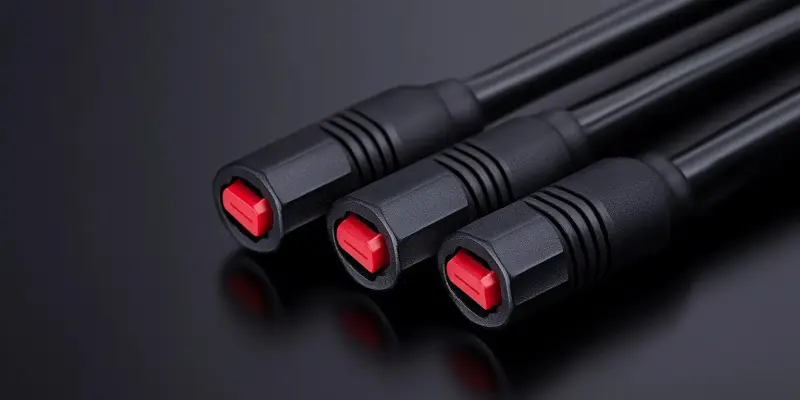In an era where high-definition visuals and seamless connectivity have become essential, VESA’s introduction of the DP80LL cables at CES is a groundbreaking advancement that addresses a significant challenge in the technology sector. These new cables represent a significant upgrade to the existing DP80 cables, offering enhanced data transfer capabilities that extend over longer distances. This development is particularly significant for users who require efficient data transmission from their devices to displays supporting the ultra-high-bit-rate (UHBR20) interface.
Enhancing Data Transfer Capabilities Over Longer Distances
The standout feature of the DP80LL (Low Loss) cables is their ability to maintain an ultra-high-bit rate of 20 Gbps per lane over a length of up to 3 meters. Previously, standard DP80 cables were limited to a maximum length of just 1 meter. This increase in allowable cable length is a crucial innovation for applications requiring longer connections, such as gaming and professional setups where the computer and the display might be situated farther apart. With the introduction of DP80LL cables, users can now experience up to 80 Gbps transfer rates over four lanes without significant data loss over these extended distances.
This advancement comes as a response to growing demands for high-quality and efficient data transmission across longer distances. The DP80LL cables ensure that high-resolution visuals and smooth gameplay can be achieved without sacrificing performance, even when devices are not in close proximity. This is particularly beneficial in environments where space constraints or layout designs necessitate longer cable runs. VESA’s commitment to improving data transmission capabilities emphasizes their role in driving innovation in display technology.
Showcasing the DisplayPort 2.1 UHBR20 Interface
At CES, VESA is also set to showcase the DisplayPort 2.1 UHBR20 interface, which stands as the highest DP standard on modern displays. This new interface is designed to ensure ultra-high resolutions, stunning HDR visuals, and smoother gameplay experiences, meeting the expectations of users who demand top-tier visual performance. The DisplayPort 2.1 UHBR20 interface’s compatibility with the new DP80LL cables underscores the significance of this launch, as both technologies aim to deliver unmatched data transfer speeds and visual quality.
The collaboration between VESA and NVIDIA further highlights the importance of this development. Together, they are working to maximize compatibility between NVIDIA GPUs and VESA-certified displays through the DP2.1 UHBR20 ports. This partnership ensures that high-resolution outputs, such as 8K and 4K at up to 240Hz refresh rates, can be achieved without compression. By aligning their efforts, VESA and NVIDIA are paving the way for a future where high-quality, long-distance data transfer is the norm, enhancing user experiences across various applications.
Advancements in Display Technology and Compatibility
In an age where high-definition visuals and seamless connectivity are essential, VESA’s unveiling of the DP80LL cables at CES marks a revolutionary leap forward, addressing a critical challenge in the tech industry. These new cables significantly enhance the existing DP80 cables, introducing superior data transfer capabilities that can span longer distances. This innovation is especially crucial for users needing efficient data transmission from their devices to displays that support the ultra-high-bit-rate (UHBR20) interface. As technology and consumer expectations grow, the demand for high-quality, reliable connections has never been greater.
The DP80LL cables are designed to meet this demand, ensuring that both professionals and everyday users can experience uninterrupted and pristine visual quality. These advancements in cable technology highlight VESA’s commitment to pushing the boundaries of what’s possible in digital connectivity. By addressing the needs of modern users who require robust and dependable transmission of high-definition content, VESA is setting a new standard for performance and reliability in the realm of audio-visual technology.

